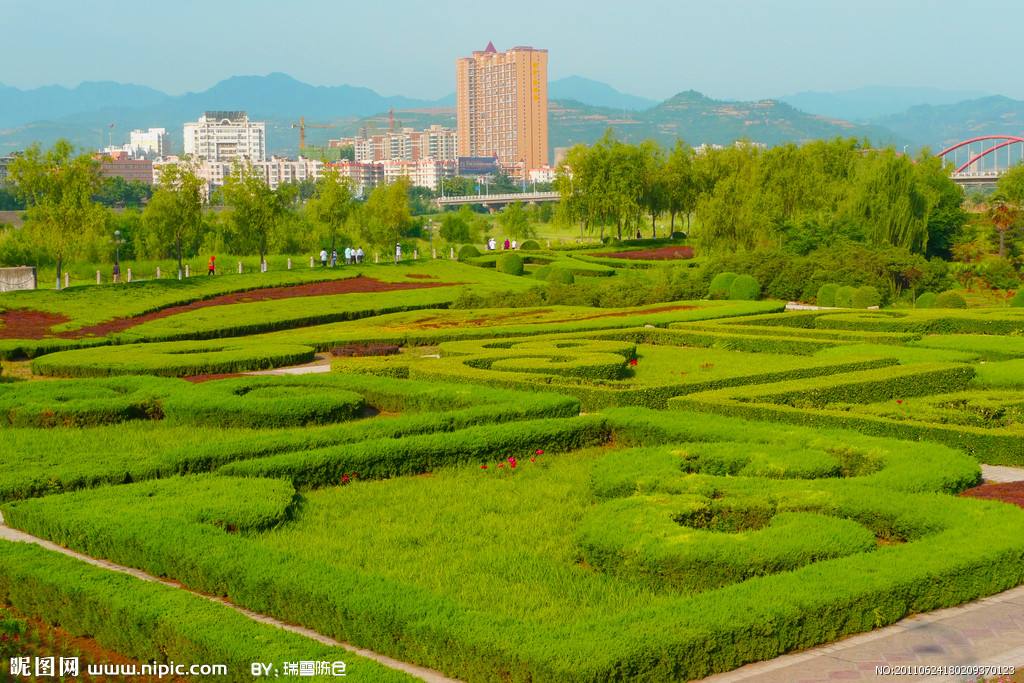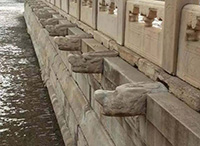The drainage system of the Forbidden City is better than you think
The drainage system of the Forbidden City is better than you think
At the beginning of the construction of the Forbidden City in Beijing, the drainage system was accurately measured, precisely designed, and carefully constructed. At least, the drainage system of the Forbidden City is much better than you think.
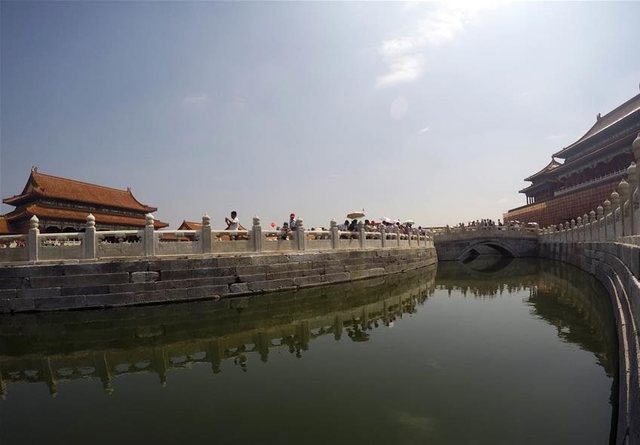 The ground of the Forbidden City conforms to the characteristics of the geographical environment of Beijing, and the overall trend is high in the north and low in the south, low on both sides of the middle, and slightly sloped. Among them, the horizontal height of Shenwumen in Beimen is 46.05 meters, the horizontal height of Wumen in Nanmen is 44.28 meters, and the difference in horizontal height between north and south is about 2 meters. This slope creates favorable conditions for natural drainage and allows the accumulated water to be slowly discharged.
The ground of the Forbidden City conforms to the characteristics of the geographical environment of Beijing, and the overall trend is high in the north and low in the south, low on both sides of the middle, and slightly sloped. Among them, the horizontal height of Shenwumen in Beimen is 46.05 meters, the horizontal height of Wumen in Nanmen is 44.28 meters, and the difference in horizontal height between north and south is about 2 meters. This slope creates favorable conditions for natural drainage and allows the accumulated water to be slowly discharged.
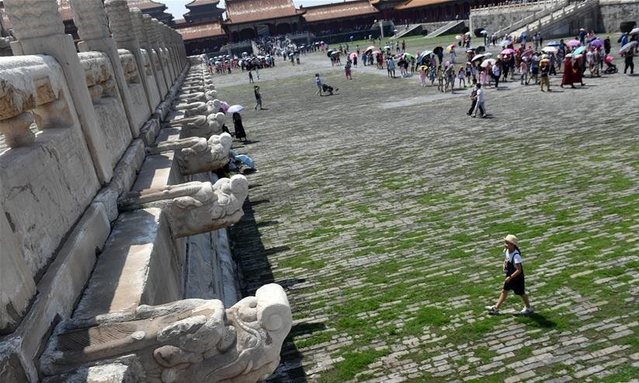 The head of the forbidden city in this palace has a chiseled round hole in its mouth
The head of the forbidden city in this palace has a chiseled round hole in its mouth
In addition, the drainage system of the Forbidden City is very large. The length of the ancient rain ditch that has been preserved so far is more than 15 kilometers, and the length of the dark ditch is nearly 13 kilometers.
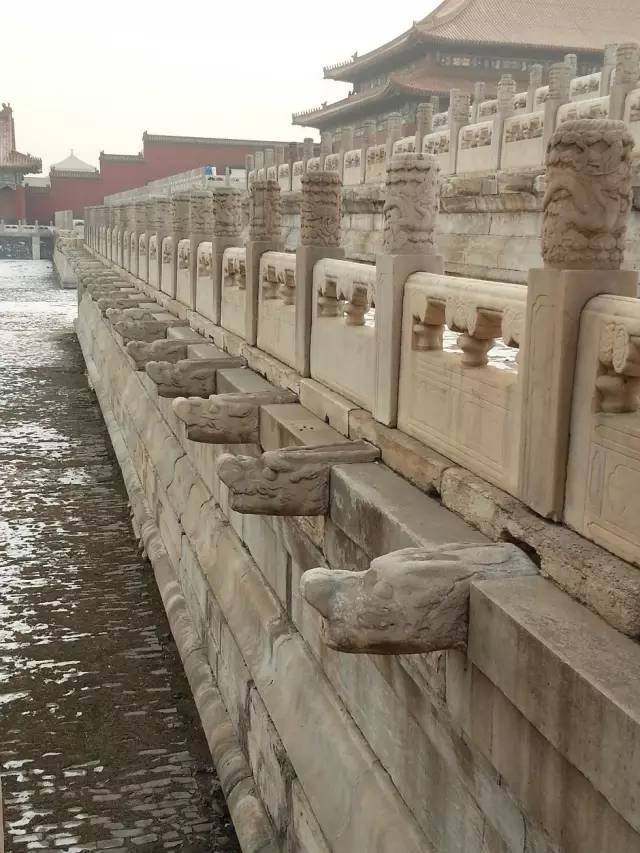 The drains of the three halls
The drains of the three halls
The drainage ditches in the Forbidden City all lead to the Inner Jinshui River, which is connected to the 52-meter-wide moat outside the Forbidden City Wall, and communicates with the surrounding outer Jinshui River, Zhongnanhai and other water systems.
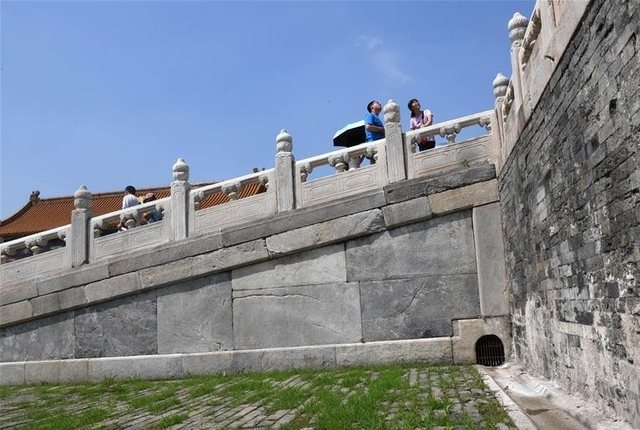 There are a total of 1142 faucet drain holes on the triple platform of the three halls of the Forbidden City, which instantly drains the rainwater on the table and forms a magnificent landscape of thousands of dragons spitting water. The discharged water flows into the inner Jinshui River through the high terrain from the north to the south.
There are a total of 1142 faucet drain holes on the triple platform of the three halls of the Forbidden City, which instantly drains the rainwater on the table and forms a magnificent landscape of thousands of dragons spitting water. The discharged water flows into the inner Jinshui River through the high terrain from the north to the south.
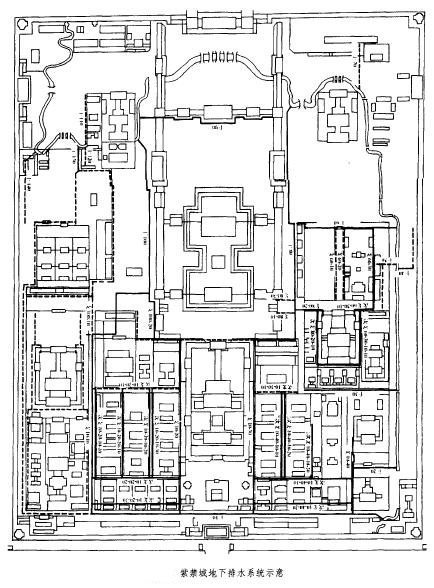 The drainage system of the Forbidden City
The drainage system of the Forbidden City
The drainage of the Forbidden City is a combination of various drainage methods, including both underground water channels and open trenches on the ground. These large or small, light or dark, vertical and horizontal drainage facilities can make more than 90 courtyards in the palace, 72 Rainwater of 10,000 square meters is drained smoothly.
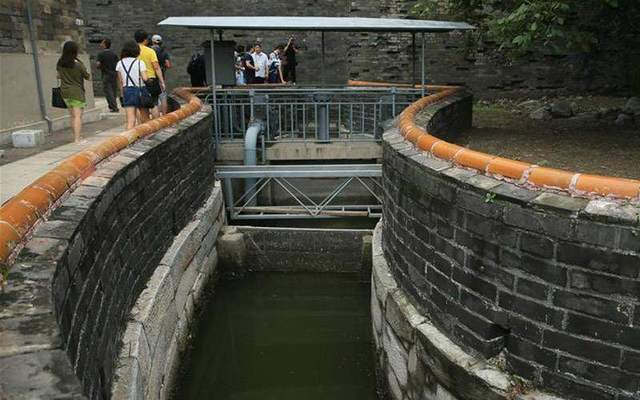 There are two sets of light and dark systems for drainage in the Forbidden City. The open drainage is discharged into the surrounding river through various drainage outlets and spouting nozzles; the hidden drainage is to discharge water into the river through underground drainage channels, and this river is the Jinshui River inside and outside. The inner Jinshui River flows through most of the Forbidden City from northwest to southeast, flows out at the southeast corner of the Forbidden City, and merges into the moat, which is connected to the Beijing City Water System, digests and absorbs the rainwater of the Forbidden City, and fully guarantees the smooth drainage of the Forbidden City.
There are two sets of light and dark systems for drainage in the Forbidden City. The open drainage is discharged into the surrounding river through various drainage outlets and spouting nozzles; the hidden drainage is to discharge water into the river through underground drainage channels, and this river is the Jinshui River inside and outside. The inner Jinshui River flows through most of the Forbidden City from northwest to southeast, flows out at the southeast corner of the Forbidden City, and merges into the moat, which is connected to the Beijing City Water System, digests and absorbs the rainwater of the Forbidden City, and fully guarantees the smooth drainage of the Forbidden City.
